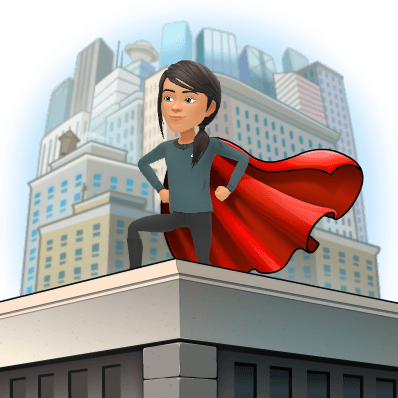When July hits, a sense of panic fills countless teachers. Back-to-school shopping and sales will begin. If you're not ready to dive into the 2021-2022 school year just yet, there are a few ways that you can organize your Gmail inbox to prioritize what you see and, more importantly, when you see it. Aside from "out of the office" automated responses, these Gmail tips and tricks are great for summer snoozes and even better organization in the fall.
Snooze your mail.
Suppose you're not ready to read an email from an admin or don't want to read the tech updates for the fall, no worries! Snooze the email. Schedule the email to reappear when you're ready to read it. Summer is your time to recharge and relax. Everyone has a different process and approach. For me, I like to plan ahead. I work a little bit overtime in the mornings before my family wakes up, and then, after crossing something off my to-do list, I enjoy my days. Some people want to set aside a weekend later in the summer to prepare for the next school year. Whatever the process is for you - follow it. Snoozing your mail allows you to schedule and control your workflow in a manner that makes sense to you.
Schedule reminders to yourself.
Speaking of pending tasks, scheduling reminders is a great way to create visual to-do lists or remind yourself to complete a time-sensitive task. Scheduled reminders allow us to focus on what is in front of us and not worry about essential actions that need to occur later. I love scheduling reminders about sending out my weekly staff email or scheduling a recurring form to appear at 6 AM when I first look at my email for the day. Other items that I schedule for myself are reminders about the start of the semester, grading periods, and other noteworthy activities that arise - like upcoming PDs and meetings. Scheduling tasks takes the worry or anxiety of forthcoming events off my plate until it is time to give it my attention.
Sort your mail by assigning labels.
I am a fan of folders - physical and digital. I like having critical information sorted into alphabetized, labeled, and color-coded. Putting every piece of information in its place brings me joy and my inner Marie Kondo. At the beginning of the year, especially, teacher inboxes are filled with critical emails from so many entities, with attachments that need to be referenced later—those emails matter. Shorting information into appropriate labels can make finding essential information like health notifications from the nurse, department emails, or committee notes quicker and easier. This sense of sorting reduces the visual clutter in one's inbox and clears the way for more pressing emails and pending tasks that need to be completed immediately.
Star your inbox to further organize and prioritize your messages.
Starred is a label automatically built into Google. Starred emails have their filter, and they also serve as visual reminders. When using the desktop version of Gmail, users can set the color of the stars. Coding stars based on priority or classification can be helpful for some. I love using stars to indicate that an email contains information or necessitates a response before leaving for the day. Color also brings me joy. The star feature is a quick tool for me that I have found helpful. Again, play with the features provided by Gmail and use the tools that apply to your organizational style.
Use the priority inbox features to group unread, starred, and other labels as needed.
No matter how you choose to organize your Gmail and your digital life, don't hesitate to use the tools that are available to you to maximize the efficiency and effectiveness of the tools. Keeping yourself organized is empowering and can free up your mind to worry about what's happening in the real world AND can allow you to soak up the summer sun, too! We all need a break, and tech tools like Gmail can be leveraged to help ease your mind and snooze a little longer this summer.





















